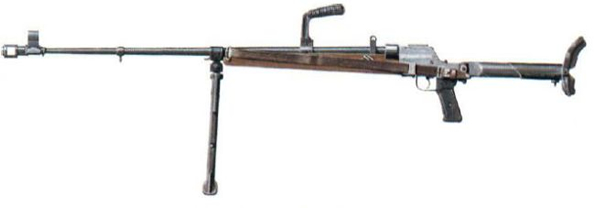Panzerbüchse 39 anti-tank rifle
History, technical sheet and photo

Panzerbüchse 39 anti-tank rifle history
In 1917 the Germans developed the first anti-tank rifle in history, the Mauser 1918 T-Gewehr. As this weapon was not entirely satisfactory, the German army wanted to acquire a new model during the interwar period. This one, available in 1938, is developed by the engineer B. Brauer and bears the name « Panzerbüchse 38″ (PzB 38).
This anti-tank rifle works with a cylinder head system and measures 161.5 cm in length for a total mass of 15.9 kg. He pulls a 7.9 mm cartridge. However, the PzB 38 regularly cuts out and is difficult to maintain on the ground. The Germans are trying to improve this weapon and develop a new model from the following year: the « Panzerbüchse 39″ (PzB 39).
This new anti-tank rifle has a total mass slightly less than its predecessor (12.6 kg). To increase the rate of fire, two magazines with a capacity of 10 cartridges each are installed on each side of the barrel: they serve only as a reserve so that the shooters replenish the weapon more quickly. Its production began in 1940 and ceased a year later: the PzB 39 remained in stock until 1944, when it was gradually withdrawn from the lines, proving helpless against the Allied tanks, although it was still useful against Light vehicles.
A variant of the Panzerbüchse 39, designed with a 590 mm gun, was produced from 1942 to fire several types of grenades.
Panzerbüchse 39 anti-tank rifle specification
Creator/User: Germany
Denomination: PzB 39 – Panzerbüchse 39
Number produced (1941-1942): 39,232
Fire mode: single shot
Effective firing range: 300 m (for a 25 mm-shield penetration)
Rate of fire: 10 rounds/min
Weigth: 12,6 kg
Total length: 1620 mm
Barrel length: 1085 mm
Cartridge: 7.92x94mm Patronen
Muzzle velocity: 1210 m/s
